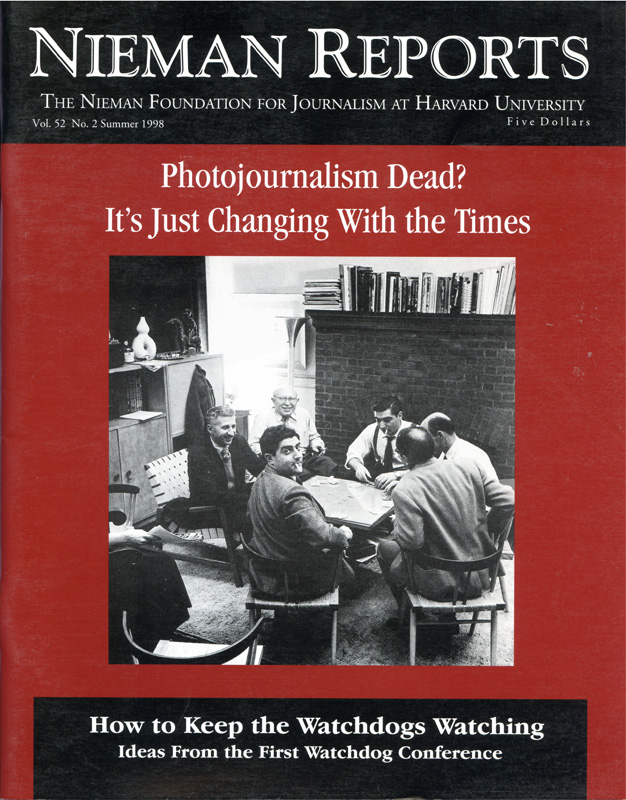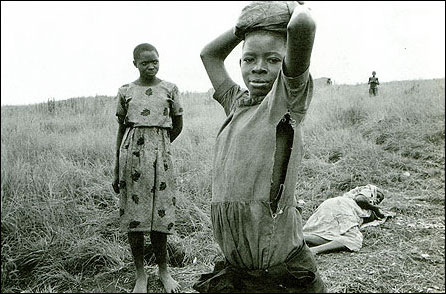
A girl poses at the Benaco refugee camp, Tanzania, 1994.
The Benaco refugee camp was set up in Tanzania in late April or early May of 1994, one of the first settled by Rwandans fleeing the brutal civil war in their homeland. It quickly filled with around 600,000 largely Hutu refugees, most of whom are still there. Because of its location near a main road and good water sources, Benaco has been one of the more orderly and stable camps for Rwandan war victims. Around 50 staff members of the French relief group Doctors Without Borders have been providing various health services in Benaco, including in- and out-patient care, epidemic control, sanitation and special attention to infants and pregnant and lactating women.
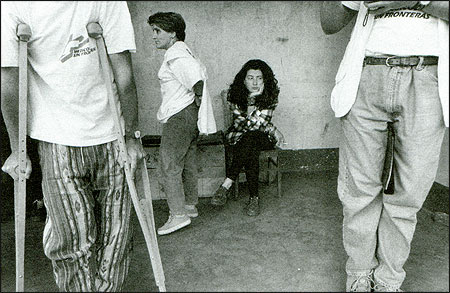
The day begins for the crew from Doctors Without Borders, 1995.

Boys with jerry cans for fresh water use umbrellas and small plastic tarps to fend off a driving rain, 1994.
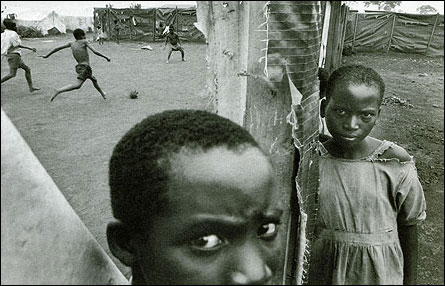
Children in the camp play soccer with a makeshift ball while others wait.
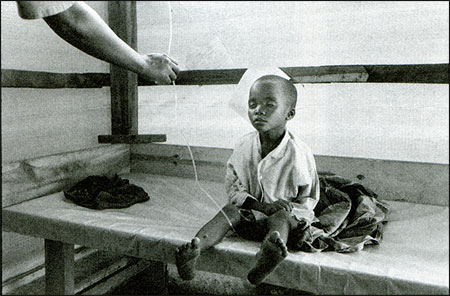
A worker from Doctors Without Borders monitors a small boy’s intravenous hookup.

Workers from Doctors Without Borders close their eyes against dust kicked up by a departing plane at the refugee camp.
All photos © Eli Reed/Magnum. Reed is a 1983 Nieman Fellow.
